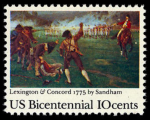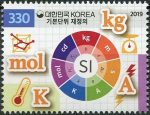(Explore the history and landscape of the United States with us as we approach the 250th anniversary of the American Revolution and American Independence. Get out your homeschool atlas and almanac and follow along!)
Arkansas is our homeschool state-of-the-week, so why not spend a few minutes today with your students learning about one of Arkansas’ most important historic places: Arkansas Post National Memorial, which commemorates the first European settlement site in Arkansas.
![[Homeschool American Heritage]](https://upload.wikimedia.org/wikipedia/commons/thumb/9/97/Arkansas_Post_National_Memorial_005.jpg/1024px-Arkansas_Post_National_Memorial_005.jpg)
“Located at the confluence of two rivers, Arkansas Post has served as a gathering place for many cultures throughout human history.”
In 1686, Henri de Tonti established a trading post known as “Poste de Arkansea” at the Quapaw village of Osotouy. Referred herein as “The Post,” it was the first semi-permanent French settlement in the lower Mississippi River Valley. The establishment of the Post was the first step in a long struggle between France, Spain, and England for dominance of the Mississippi River Valley.
Over the years, the Post relocated as necessary due to flooding from the Arkansas River, but its position always served of strategic importance for the French, Spanish, American, and Confederate military.
Spanish soldiers and British partisans clashed here in the 1783 Colbert Raid, the only Revolutionary War action in Arkansas.
Arkansas Post became part of the United States following the Louisiana Purchase of 1803. By 1819, the post was a thriving river port and the largest city in the region and was selected as the first capital of the Arkansas Territory.
During the Civil War, Confederate troops tried to maintain tactical control of the confluence of the Arkansas and White Rivers, and in 1862 they constructed a massive earthen fortification known as Fort Hindman at the Post. In January 1863 Union troops destroyed the fort, ensuring Union control of the Arkansas River. (nps.gov)
You can find a wealth of additional information about the Post’s history, landscape, location(s), and visitor facilities on the website for Arkansas Post National Memorial from the National Park Service, and also on the Post’s page on Wikipedia.
![[Homeschool American Heritage]](https://upload.wikimedia.org/wikipedia/commons/thumb/3/35/Arkansas_Post_National_Memorial%2C_Arkansas_%286c36e4fc-c047-4440-8c40-c37451e612e9%29.jpg/1024px-Arkansas_Post_National_Memorial%2C_Arkansas_%286c36e4fc-c047-4440-8c40-c37451e612e9%29.jpg)
Explore America’s National Parks, National Historical Parks, National Historic Sites, National Monuments, and more via Wikipedia and via the U.S. National Park Service’s website today.
What historical American treasures have you and your students explored in your homeschool this Orion Term? 🇺🇸
❡ The great globe itself: This is one of our regular Homeschool Geography posts featuring important natural and historical sites in the United States. Print your own copy of our River Houses American Heritage Calendar and follow along with us, and add your name to our weekly mailing list to get great homeschool teaching ideas delivered right to your mailbox all through the year. 🌎
❡ We set to-day a votive stone: If you want a great long-term history and geography project for your homeschool, explore the Historical Marker Database online (hmdb.org) and make a plan to find all the markers that are listed in your local area. Add any new ones you know of that are missing, and add new photos or descriptions for the ones already included. Your students will gain a better appreciation for your local community and will learn a wealth of new information about history and geography. 🏛
❡ Print this little lesson: Down at the bottom of this post you’ll find a special “Print” button that will let you create a neat and easy-to-read copy of this little lesson, and it will even let you edit and delete sections you don’t want or need (such as individual images or footnotes). Give it a try today! 🖨
❡ Books in the running brooks: You can always turn to your River Houses atlas and almanac for more information about any of our homeschool states-of-the-week. The almanac has detailed profiles of all the U.S. states and territories, and the endpapers of the atlas are indexes that will show you where all of the individual national and regional maps may be found. 📚
❡ Homeschool calendars: We have a whole collection of free, printable, educational homeschool calendars and planners available on our main River Houses calendar page. They will help you create a light and easy structure for your homeschool year. Give them a try today! 🗓
❡ Support our work: If you enjoy our educational materials, please support us by starting your regular Amazon shopping from our very own homeschool teaching supplies page. When you click through from our page, any purchase you make earns us a small commission at no extra cost to you. Thank you for helping us to keep going and growing! 🛒
❡ Join us! The aim of the River Houses project is to create a network of friendly local homeschool support groups — local chapters that we call “Houses.” Our first at-large chapter, Headwaters House, is now forming and is open to homeschoolers everywhere. Find out how to become one of our founding members on the Headwaters House membership page. 🏡




